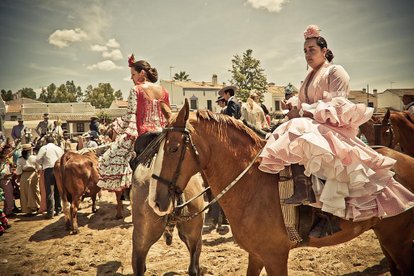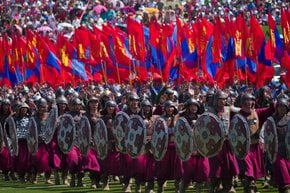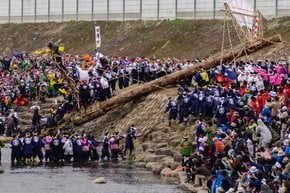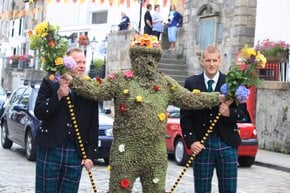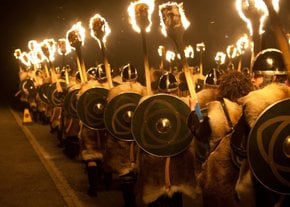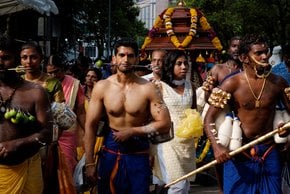El Rocio Pilgrimage or Romería de El Rocío 2024 in Seville
A small village of 1000 residents comes to life with a million of flamboyant pilgrims and their frantic celebration of the Virgin of el Rocío
Dates: May 17–20, 2024
The Romería de El Rocío, also known as the El Rocio Pilgrimage or El Rocio Festival, is an annual religious event held in the Andalusian village of El Rocio, Spain. Situated within the municipality of Almonte in the province of Huelva, approximately 50 miles (80 km) from Seville, it draws in pilgrims from all over Spain and beyond to honor the Virgin of El Rocio. This centuries-old tradition typically occurs in late spring or early summer, the weekend before Pentecost Monday (the 50th day after Easter Sunday). The normally quiet streets of the town transform into a bustling scene with an estimated million pilgrims.
Experiences
During the pilgrimage, participants engage in various religious rituals, including processions, prayers, and offerings at the Sanctuary of Our Lady of Rocio. It's a deeply spiritual experience for many as they express their devotion through song, dance, and displays of faith. Additionally, visitors have the opportunity to witness traditional Andalusian music and dance performances, adding to the vibrant atmosphere of the event.
Details
As for logistics, it's important to note that attendance at the El Rocío Pilgrimage is free of charge. However, visitors should consider potential expenses for accommodations, meals, and transportation. To reach El Rocío, various transportation options are available, including bus services offering routes from Huelva, Seville, and other nearby towns to Almonte and train, with the nearest railway stations located in La Palma del Condado, Huelva, and Seville.
Pilgrimage
A sacred journey attended by all brotherhoods starts from their hometowns and ends at the Sanctuary of Our Lady of Rocio. The most common start points of the pilgrimage include Seville, Almonte, Huelva and also Villamanrique de la Condesa. The walk concludes on Pentecost Sunday, with the procession occurring the following Monday.
The pilgrimage is a spectacle of color, sound, and enthusiasm. Female pilgrims don flamenco-styled dresses, while males—wide-brimmed boleros and riding jackets. Many participants ride on horseback; others travel in colorful carriages. The air is filled with chants and music from drums, flutes, tambourines, and guitars. However, the pinnacle of the pilgrimage occurs early Monday morning when the procession reaches the Sanctuary of Our Lady of Rocio, and the idol of the Virgin is paraded through the streets.
Simpecados
The Simpecados are intricately adorned banners that hold significant religious and cultural importance in the Romería de El Rocío, symbolizing their journey of faith and devotion to Our Lady of Rocío. Carried in a specially adorned wagon adorned with ribbons, flowers, and other decorative elements, the Sinpecado serves as a mobile sanctuary, representing the culmination of the pilgrimage as it is presented to the image of the Virgin Mary in the Village of El Rocío. Each Simpecado features intricate embroidery, often depicting religious scenes, symbols, and the name of the brotherhood it represents.
Origin
The Romería de El Rocío traces its origins back to the 15th century. According to legend, it was discovered by a local hunter from the town of Almonte in a tree trunk near the contemporary Doñana National Park. The figurine believed to possess miraculous healing powers, attracted pilgrims seeking cures for various ailments, leading to the construction of a church in honor of the Virgin. The tradition of the Pentecost Monday pilgrimage began in 1758, initially local but eventually gaining popularity across Spain and beyond.


